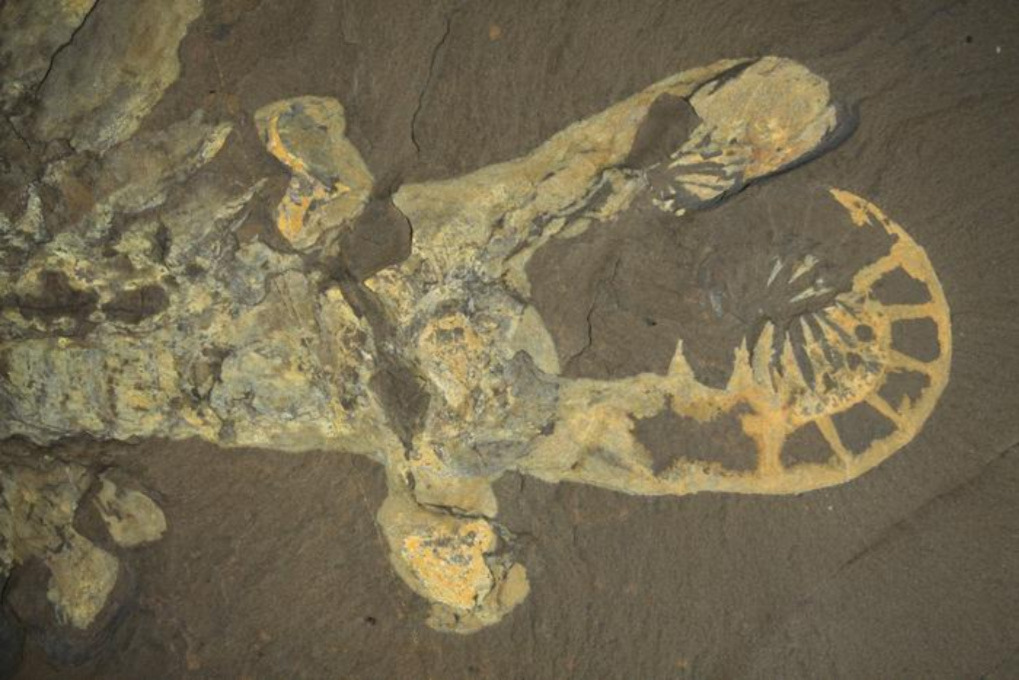This ancient, Lovecraftian apex predator chased and pierced soft prey
Half a billion years ago, Anomalocaris canadensis probably used its bizarre headgear to reach out and snag soft prey with its spiky clutches.

One of the earliest apex predators, and perhaps the freakiest to ever haunt the sea, may have also been a delicate eater.
For decades, paleontologists have assumed that the long-extinct Anomalocaris canadensis — roughly translated as “the abnormal shrimp from Canada” — used two spiny appendages on its face to grab hard trilobites off the seafloor and crush and eat them. But a new analysis suggests the bizarre hunter may not have been up to the task. Instead, A. canadensis may have swiftly hunted soft prey in the water, researchers report in the July 12 Proceedings of the Royal Society B.
“These were the orcas … the great whites of the time,” says paleontologist Jakob Vinther of the University of Bristol in England, who was not involved in the study. A. canadensis was clearly adapted to be a top predator, he says, though it seems trilobites might have been too tough.
A. canadensis reigned roughly 500 million years ago. With a body as long as a housecat, it was among the largest creatures of the Cambrian period (SN: 2/19/15; SN: 4/24/19). Some researchers had suggested that it could have preyed upon another iconic Cambrian critter — the trilobite. Over the years, scads of fossilized injured trilobites have been unearthed, suggesting something had attacked them.
But paleobiologist Russell Bicknell of the American Museum of Natural History in New York City had reservations. Trilobite exoskeletons were hard and thick, and no one had yet presented evidence that A. canadensis could break them.
So Bicknell and colleagues compared the flexible appendages to those of some modern arthropods and tested the primitive appendages’ toughness, range of motion and optimal swimming position via computer simulations.

The ancient spiky limbs would have been effective at grabbing prey, much like those of today’s whip spiders, the researchers conclude. But the extremities were probably too delicate to attack well-armored prey. Additionally, A. canadensis would have moved most efficiently when its appendages were outstretched in front, like Superman’s arms in flight, the team found.
Taken together, the results suggest that A. canadensis was best suited for chasing soft creatures swimming through the water and snagging them in its spiky clutches, Bicknell says. “That’s going to absolutely pincushion something soft and squishy.”
The findings also imply that even the earliest predators may have been specialized hunters, says evolutionary biologist Joanna Wolfe of Harvard University, who was not involved in the study. “These were complicated ecosystems, even though they’re really ancient.”
What's Your Reaction?



























































